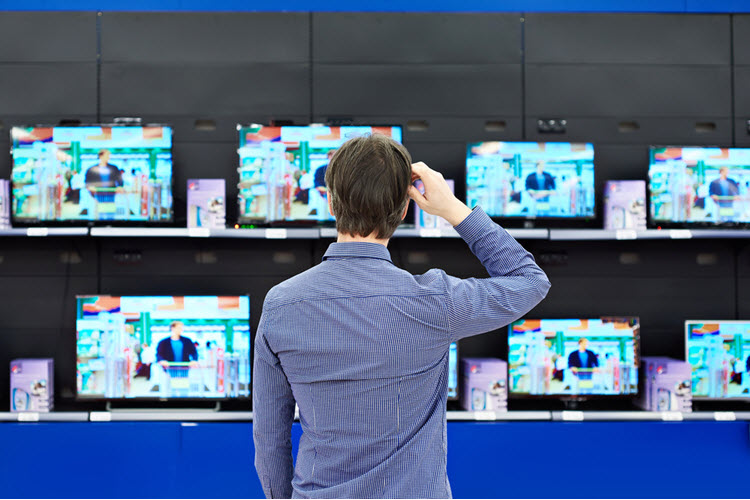TVs— Finding the Perfect Fit
We could tell you to simply just use a measuring tape to size up a TV so that it fits on your wall, but whatever happened to a nice aesthetic? Nowadays, most living rooms or family rooms are centered around the TV, so there’s more that goes into an appealing interior design while still making sure you’re getting the best sound and picture quality. It all begins with the purchase of your TV and several considerations should be thought of. Finding the best size for you can be easier said than done, but knowing what to look out for will help you get the optimum measurements.
Will My TV Fit in the Room I Want It In?
This is probably the most obvious question to ask yourself. You’ll need to decide where in the room you’ll want the TV, and then measure the height, width, and depth of that spot. Limitations may present themselves if you’re stuck with minimal wall space or a smaller entertainment center. Mounting the television on a wall isn’t always preferred, so you’ll need to use the TV’s stand. Ensure that wherever you plan to place the TV is wide enough to accommodate the stand.
If your family room is used for more than just TV watching, this may also limit space considerably. For crowded rooms, it’s been said to consider at least a 40-inch screen if you are seated 4 to 6 feet from the TV. A 50-inch screen can be sufficient if you are up to 7.5 feet from the screen. If you are 6 to 9 feet away, consider at least a 60-inch screen. Remember, TVs are measured diagonally, so a 60-inch screen measures 60 inches from one corner to the opposite corner.
Resolutions and Picture Quality
Now, you’ll shift your attention to the distance between the TV and you, the viewer. Bigger doesn’t always mean better. If you are trying to maximize screen size based on budget, chances are you’ll find some massive TVs, but you’ll have to make some sacrifices on picture quality. Typically recommended is finding a good balance between size and picture quality for long-term watching enjoyment. Remember that the higher the resolution, the closer you can sit to the TV before you’ll notice image pixelation. Normally, HDTVs offer more detail, so you can sit closer to the television, but not so close that you can see the screen pixels. Of course, you don’t want to sit so far away that you miss any of details.
There are viewing distance calculators that can recommend a screen size based on where you sit. If you don’t want to bother with an online calculator, just keep in mind this simplified calculation that you can do on your own: Measure the distance from your seat to the TV in inches and multiply by .84. That should give you the ideal screen size.
Angles
Last, but not least, is the consideration of the angle you’ll be at in regards to the TV. For optimum viewing, the TV should be placed parallel with your eyes, with no more than a 15-degree angle up or down and no more than a 40-degree angle to the left or right. If the angle you’re sitting at is too sharp compared to the TV, you may see negative images on the screen. The great thing is that a majority of well-known manufacturers will tell you the maximum viewing angles at which you can watch the TV without seeing negative images.




